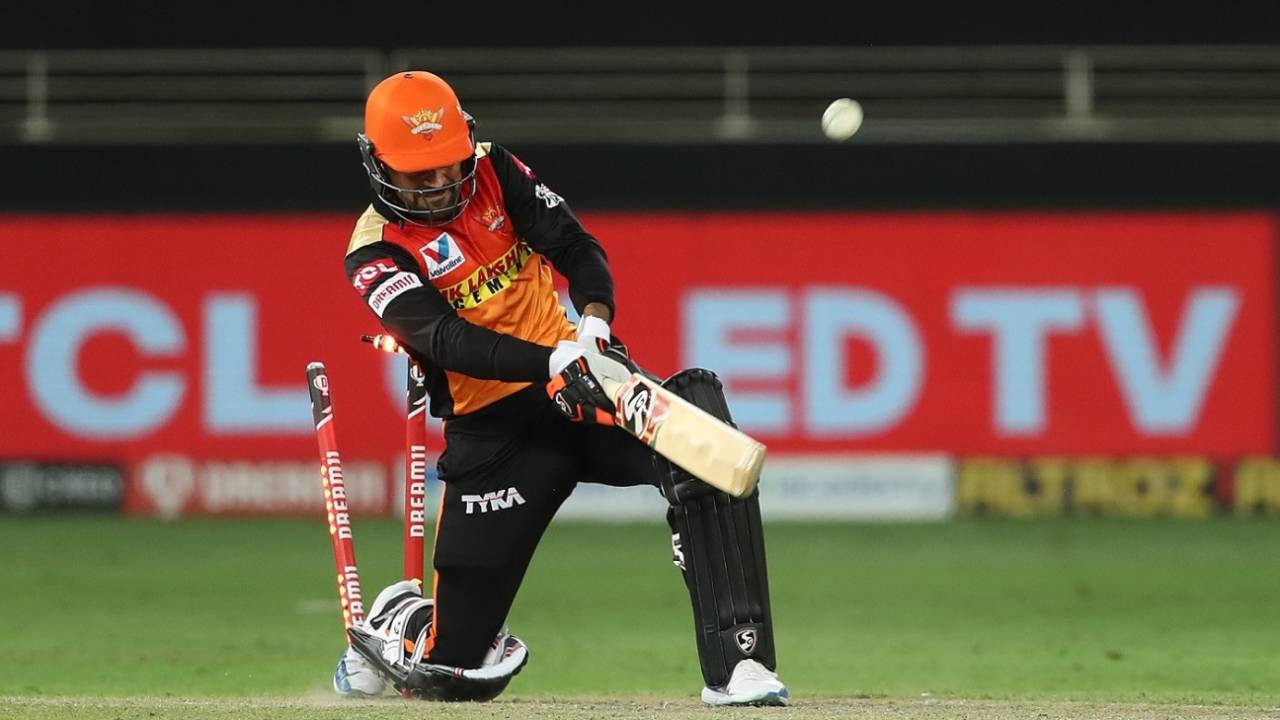Hit-wicket, not caught - what the law says about the Rashid Khan dismissal
In case you were among the many left confused, we try to explain the umpires' decision here
Nagraj Gollapudi
14-Oct-2020
Rashid Khan dislodges the stumps while trying to hit Shardul Thakur down the ground • BCCI
On Tuesday evening, the Sunrisers Hyderabad's Rashid Khan was both hit-wicket and caught off the same ball against the Chennai Super Kings. It couldn't be both, of course. And the incident, a rare one, triggered the question: was Khan out hit-wicket or caught?
After verifying with the concerned officials, ESPNcricnfo's scorers recorded it as 'Rashid Khan hit wicket b [Shardul] Thakur'. But many readers were left wondering why. Let's explain…
The incident took place on the last ball of the penultimate over of the match, delivered by Thakur. Sunrisers were in a desperate position, needing 22 runs from the final seven deliveries, with Khan on strike. Responding to the wide yorker, Khan quickly moved to his right, went down on his right knee, and hit the ball with power to long-on, where Deepak Chahar completed an easy catch. However, Khan, who had gone deep in his crease to play the shot, had pegged back the off stump and disturbed the off bail with his right heel while playing the shot.
The result: Khan became the second batsman in IPL 2020 to be out hit-wicket after the Mumbai Indians' Hardik Pandya.
According to MCC's Laws of Cricket, 'caught' takes precedence over any other form of dismissal except 'bowled'. Law 33.1 states: "If […] the striker is not out Bowled, then he/she is out Caught, even though a decision against either batsman for another method of dismissal would be justified."
So why was Khan not declared out caught? Simple: the square-leg umpire, Anil Chaudhary, had declared him out hit-wicket as soon as he hit the stumps. Automatically, at that point, the ball became dead. According to Law 20.1.1.3, the ball is "deemed to be dead from the instant of the incident causing the dismissal."
A simpler interpretation is found in Tom Smith's Cricket Umpiring & Scoring, which states that if more than one dismissal is "theoretically" possible "but an umpire gives a decision on one of those methods before the other is completed, it is the first decision that counts".
Coincidentally, the book cites an example matching the Khan dismissal. "A batsman may stand on his/her stumps while playing a pull shot into the air. If the batsman is out Hit wicket while the ball is in the air, the umpire should wait to see if the catch is taken, and if it is, he/she should give the batsman out Caught - should the catch not be taken, the umpire can then give the batsman out Hit Wicket. However, if the umpire does not wait, and instead gives the batsman out before the catch is taken, then the dismissal is Hit wicket."
So now you know.
Nagraj Gollapudi is news editor at ESPNcricinfo
